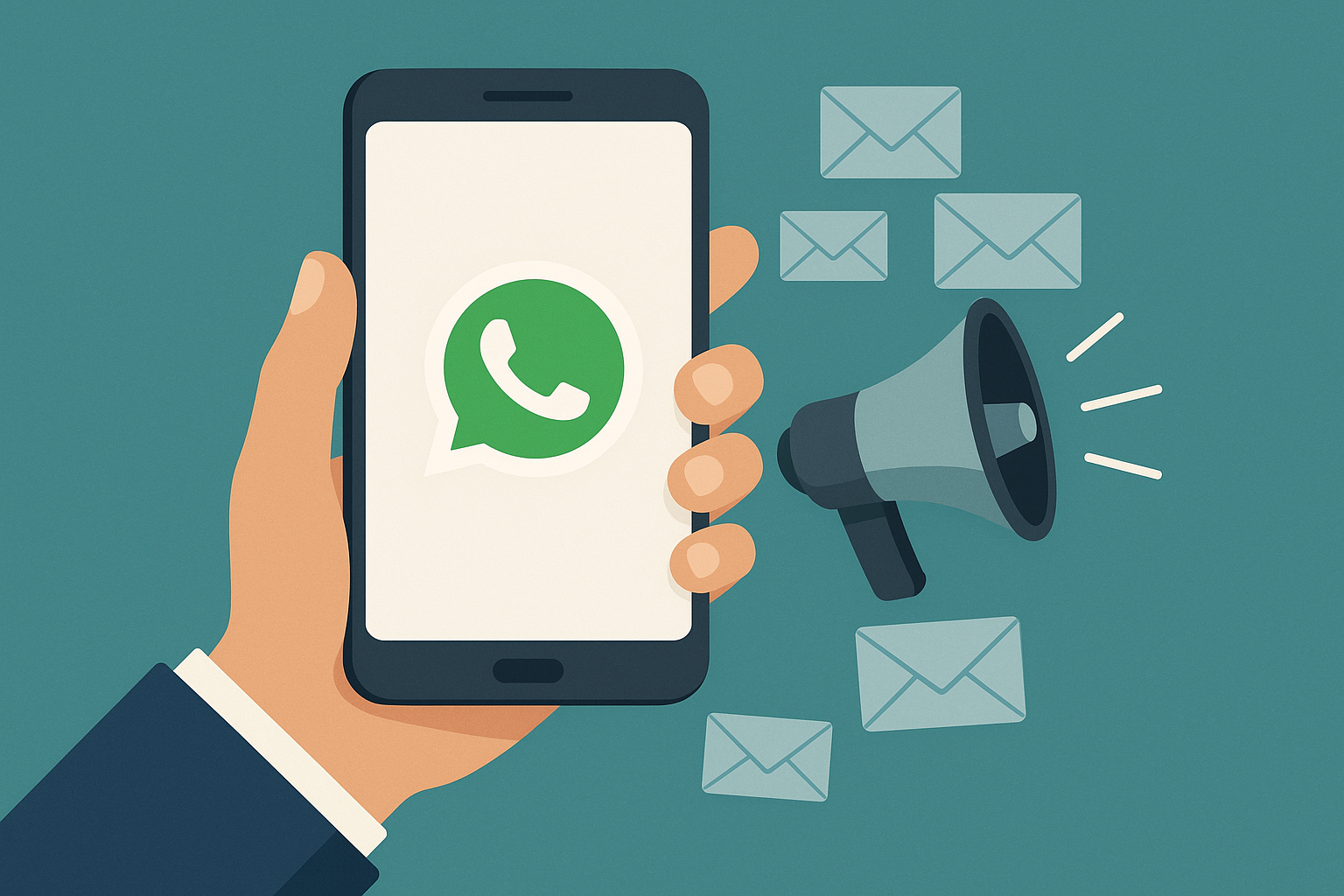How can I avoid ending up in spam by doing Email Marketing?
Man mano che la Marketing Automation acquista popolarità tra le imprese, molte aziende utilizzano questo strumento per incrementare l’efficacia e l’efficienza delle loro campagne email.
Anche se non è nostra intenzione inviare spam (come è ovvio che sia); parecchi messaggi che spediamo potrebbero essere bloccati prima di arrivare nella casella di posta del destinatario, impedendo che questi possa persino vederli.
E’ chiaro, a questo punto, che chi sceglie uno strumento software di Marketing Automation per gestire le campagne email e tenere traccia del riscontro ottenuto, deve identificare i punti deboli che rischiano di impedire il recapito di posta elettronica inviata con le migliori intenzioni.
Come è possibile che questo avvenga?
Esistono due entità principali che hanno il compito di identificare lo spam.
La prima è il fornitore di servizi di posta (ISP) che ospita la casella postale del destinatario. Google, Yahoo e tutti gli altri più comuni provider, dispongono di filtri che possono etichettare una email come indesiderata se l’indirizzo IP del mittente o il suo dominio web sono giudicati non affidabili, oppure se il messaggio stesso possiede alcune caratteristiche che lo identificano in modo altamente probabile come spam.
Questo tipo di valutazione tiene conto di centinaia di parametri diversi e, come accade per l’algoritmo di ricerca di Google che mette in evidenza i risultati secondo un ordine preciso, nessun fattore è di per sé tale da bloccare una email; tuttavia nessuno conosce esattamente la “formula segreta” del sistema di filtraggio.
La seconda entità è il client di posta o reader; molti di questi programmi, infatti, spesso identificano come spam un messaggio se stabiliscono che è irrilevante, non richiesto o molesto. I programmi che gestiscono la nostra posta sono bombardati ogni giorno da una valanga di contenuti – molti dei quali assolutamente inutili – e sono progettati per imparare a scartare ciò che non serve (pur commettendo a volte errori). Ad esempio, se un certo tipo di messaggio è troppo frequente, il vostro reader cercherà di fare del suo meglio per evitare di disturbarvi cestinandolo prima di mostrarvelo.
Fortunatamente, i più recenti strumenti di Marketing Automation sono in grado di evidenziare il verificarsi di simili eventi, consentendo così di porre attenzione al problema e risolverlo.
Gli errori più comuni nell’Email Marketing
Per prevenire un tale spreco e migliorare l’efficienza e l’efficacia delle campagne email, è importante conoscere le cause del problema e individuare i motivi che potrebbero bloccare i messaggi di marketing inviati per posta elettronica.
Sarà perciò necessario monitorare i processi alla ricerca di punti deboli, per individuarli e correggerli prima che essi danneggino la nostra reputazione.
Di seguito vengono elencati cinque tra i più comuni errori che rischiano di far finire le nostre email di marketing nello spam.
1. Inadequate authorizations
Per poter inviare email, occorre avere il permesso del destinatario, il quale deve aver espresso la disponibilità a ricevere comunicazioni periodiche di marketing; senza questo permesso, di fatto stiamo inviando messaggi non richiesti, il che aumenta moltissimo la probabilità che vengano catturati da un filtro antispam.
I fornitori di servizi di posta (inclusi quelli utilizzati dagli strumenti di Marketing Automation), ultimamente hanno migliorato le loro capacità di individuare l’esistenza o meno di permessi; ad esempio, se si effettua un invio massiccio di email ad una lista di contatti acquistata da terze parti, qualsiasi ISP diventerebbe sospettoso.
L’utilizzo di questo tipo di liste è perciò spesso il modo migliore per essere identificati come spammers.
Un altro caso di permesso insufficiente si verifica quando inviamo un messaggio a qualcuno che ci ha fornito il suo indirizzo email, ma non ha specificato esplicitamente (opt-in) che desidera ricevere promozioni o newsletter; questo accade spesso con i clienti, ai quali è consentito inviare comunicazioni solo in merito ai prodotti acquistati o beni simili.
Molti servizi di Email Marketing richiedono oggi un processo di “opt-in doppio”, il che significa che un utente che si è registrato per ricevere email riceve un primo messaggio di conferma in cui deve cliccare su uno speciale link; ciò significa che, se non effettua questa azione, non riceverà nessuna ulteriore comunicazione.
2. Sending emails with content at risk
L’intero contenuto delle nostre email, inclusi il corpo del messaggio, i link, le immagini e le intestazioni, può racchiudere al suo interno elementi che – se non stiamo attenti – rischiano di farlo entrare nella categoria dello spam. Ecco alcuni errori da evitare:
- frequenti caratteri speciali utilizzati dagli spammer per “mascherare” il testo (ad esempio: vendit@ pr0m0zi0n@le)
- links to suspicious Internet addresses
- oggetto del messaggio fuorviante, che contiene ad esempio “Re” (reply, risposta) o “Fwd” (forward, inoltro) quando si tratta della prima email inviata
- codice html “pasticciato” o con una formattazione inutilmente complessa
- too many images in relation to the text or no text
- troppi caratteri maiuscoli – fanno sembrare il messaggio eccessivamente “esortativo” e quindi sospetto
3. Violations and inaccuracies
La Normativa sulla Privacy (in particolare in Italia) è molto restrittiva e stabilisce le regole per il corretto invio di email a fini commerciali. Gli ISP ovviamente tendono a tutelarsi al massimo per evitare possibili esposizioni legali e bloccano l’invio di messaggi promozionali che rischiano di violare la legge – per non parlare del rischio (anche di immagine) che corre l’azienda mittente.
Here are some important points to check:
- in ogni email deve essere presente l’opzione di “unsubscribe” (opt-out) per consentire al destinatario di chiedere ed ottenere di non ricevere più simili messaggi in futuro
- il mittente è tenuto ha rispettare con sollecitudine ogni richiesta di cancellazione dalla lista di distribuzione (unsubscribe) da parte del destinatario
- l’indirizzo del mittente deve essere preciso
- l’oggetto del messaggio deve essere rilevante e coerente rispetto al contenuto
- è bene includere i dati dell’azienda mittente, incluso l’indirizzo di posta ordinaria
4. Sender not authenticated
E’ un problema che può verificarsi se un’agenzia o un’azienda mandano email utilizzando il loro server di posta. Gli ISP solitamente autenticano l’identità del mittente per assicurare che il messaggio proviene da una fonte legittima; quando l’invio avviene tramite un servizio, ad esempio uno strumento di Marketing Automation fruito attraverso il Cloud, è questo stesso servizio che effettua l’autenticazione.
Purtroppo gli standard per l’autenticazione, come DKIM e SPF , sono difficili da impostare manualmente e questo rischia di bloccare i messaggi provenienti dal server aziendale.
E’ anche importante utilizzare indirizzi del mittente che risultino credibili e non diano adito a dubbi.
5. Insignificant messages
According to some research, two thirds of marketers do not allow their contacts to choose what type of email they intend to receive and only one third allows their interlocutors to specify how often they want to be contacted.
Come già spiegato, i filtri messi in campo dai fornitori di servizi di posta elettronica non sono i soli strumenti in grado di trasformare la nostra corrispondenza in spam; l’altro elemento che può bloccare la posta in arrivo sono gli stessi destinatari (clienti, prospect, lead, semplici contatti).
To avoid being rejected, marketing messages must prove their relevance and the value they can offer, and make sure that those who receive them understand it. So:
- non inviare offerte promozionali a chi non contattiamo da più di otto mesi (dopo tanto tempo dobbiamo verificare se esista ancora un interesse)
- do not insist on sending communications to anyone who systematically baskets them (i.e. never opens them)
- evita di spedire email con eccessiva frequenza (tre o quattro volte la settimana) – specie se la clausola di opt-in indicava “invio occasionale”
- utilizzare bene il campo “oggetto” impiegando testi brevi, chiari e incisivi
Ci sono molti motivi per cui una email legittima e anche ben fatta possa finire nello spam; ecco perché molte imprese utilizzano strumenti di Marketing Automation per le loro campagne di Email Marketing in modo da analizzare i messaggi, verificare autorizzazioni e autenticazioni, ed evitare errori.
La buona notizia è che, inviando comunicazioni significative ed esplicitamente richieste, è molto poco probabile essere bloccati. Per cui, invece di sprecare tempo ed energie per essere sicuri di atterrare felicemente nell’inbox, conviene focalizzarsi sulla realizzazione di messaggi di qualità, che interessino e coinvolgano i nostri lettori.





Marketing is not about the stuff you make,
It is about the stories you tell
Use Sendapp to tell your business story & drive engagement to your content and business.
I love this app as I am using this app since 5 years. It is too good. Nice. Almost all my relatives has this app. When it doesn't exist it is difficult to talk people who are away from us or who are living next countries. Best and fast app for commmunication. Message + chating = whatsapp in our house. Really, download this
absolutely agree, the sender is obliged to promptly comply with any request for unsubscribe from the recipient